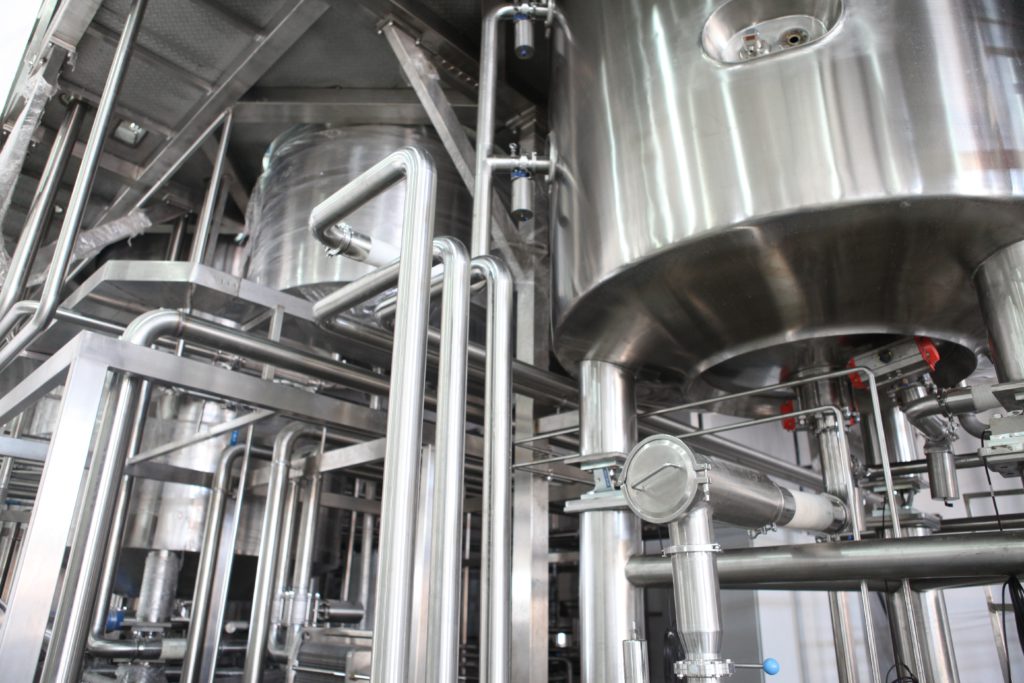Basic Reaction Kinetics
The reaction rate, ri (also referred to as the rate of reaction) is a measure of how fast a reaction is and is defined using several ways:
One of the benefits of the reaction rate is that if the reactor is scaled up the rate of reaction will be the same, which simplifies the process of reactor scale up, so no long equations are needed every time the reactor volume changes. Thus, the reaction rate is an intensive quantity as its magnitude is independent of the size of the system (i.e. changing reactor size).
For reagents, reaction rates are negative and for products the reaction rates are positive, this is because reagents are used up in reactions, and products are formed. An example of this would be the reaction:
to write this out in terms of reaction rates, the species (A, B, or C) and the stoichiometric coefficient (a, b and c) are required, and the concept stated above: the reagents being negative and the products being positive.
(1.0)
Example: To prove that the reactions rates are equal
A reactor with fluid volume 1 m3 has a reaction with the reaction time being 10 seconds, and we are told that 5 moles of B are formed, prove that the rates are equal.
Hint: use the reaction rate definitions, looking closely at parameters you have been given and equation 1.0.
Rate Equations
For any chemical reaction equation, a rate equation can be used which links the forward reaction rate with the concentration or pressure of the reactants. These are more complicated functions of reagents and (sometimes) product concentrations for a non-elementary reaction.
Reactions can be classified under these terms:
- Homogeneous: consists of only one phase
- Heterogeneous: more than one phase needed for the reaction
- Catalytic or noncatalytic
- Exothermic or endothermic
- Elementary or nonelementary
- Single reaction or multiple reactions (and within latter: series or parallel, and combinations)
Writing out a rate equation:
Taking an example reaction:
The rate equation would simply be:
And using equation 1.0 we know that the rate equation concerning species B would be the same as that of species A. K is the rate constant which is proportionally constant that indicates the relationship between the molar concentration of reactants and the rate of a chemical reaction (Helmenstine, 2018), and the rate constant concerning each species is:
Given a rate equation:
The reagents a and b are not always the stoichiometric coefficients, we say that the reaction n order concerning A and bth order concerning B and the overall order is n = a + b.
The molecularity of an elementary reaction is the number of molecules involved in the reaction. The order can be fractional values and molecularity is always a whole number.
Equilibrium Constant
For an equilibrium reaction, the rate of the forward reaction is the same as the rate of the backward reaction and the concentration doesn’t change.
(1.2)
For the reaction:
The equilibrium constant KC (also written as Keq or K) can be defined as:
(1.3)
The position of the equilibrium is determined by the entropy change, the enthalpy change, and the conditions the reaction is under such as temperature and pressure.
Assuming the reaction is elementary (stoichiometric coefficients are usually 1 for all species) the forward and backward reaction can be stated:
k1 represents the rate constant for the backward reaction and k-1 represents the rate constant for the forward’s reaction
Thus, we can know to prove equilibrium constant KC equation 1.3, by first using equation 1.2:
when rearranged will give:
References
Helmenstine, A. M. (2018, September 27). What Is the Rate Constant in Chemistry? Retrieved from ThoughtCo: https://www.thoughtco.com/reaction-rate-constant-definition-and-equation-4175922

Dr. Adam Zaidi, PhD, is a researcher at The University of Manchester (UK). His doctoral research focuses on reducing carbon dioxide emissions in hydrogen production processes. Adam’s expertise includes process scale-up and material development.’


